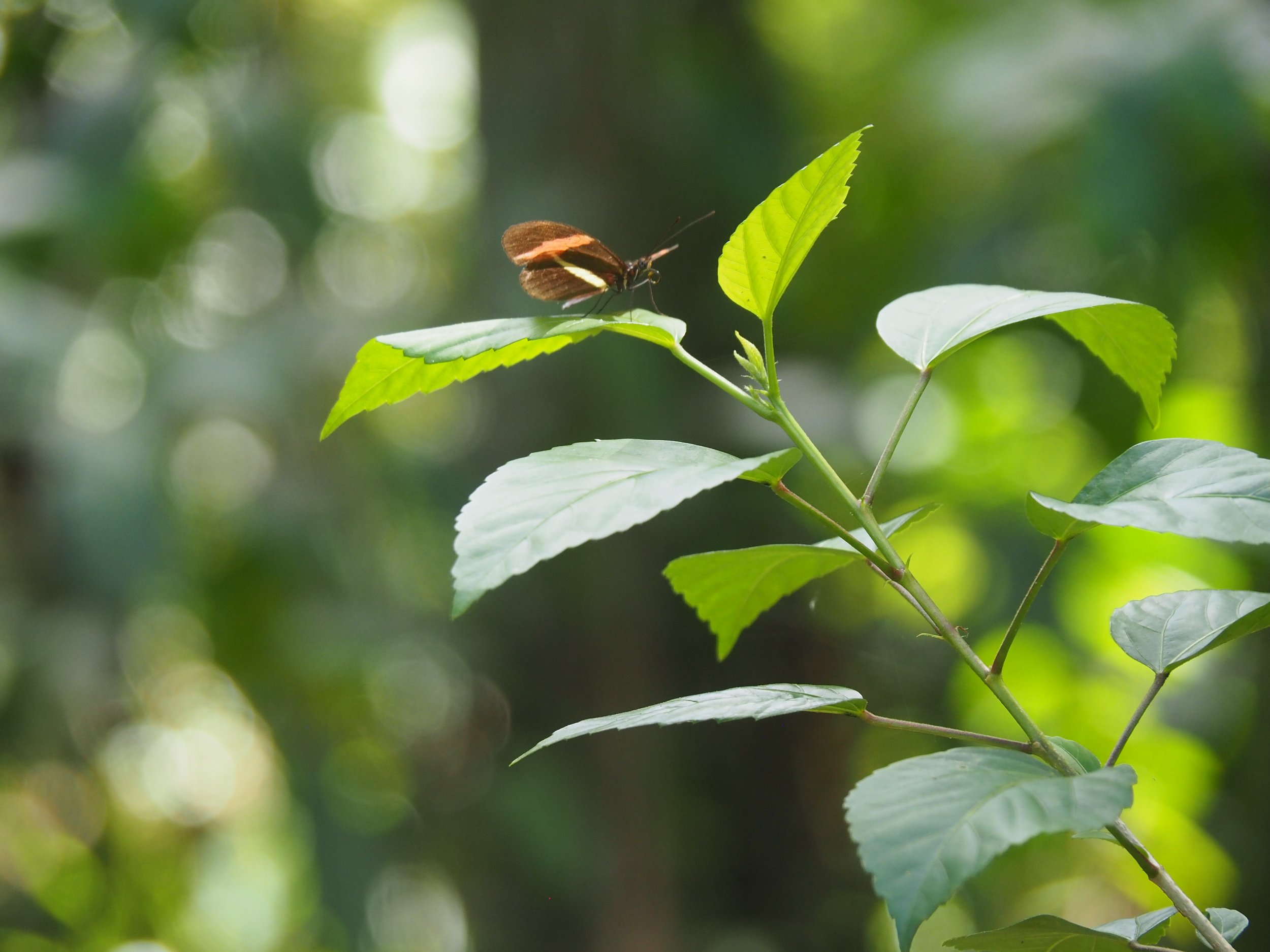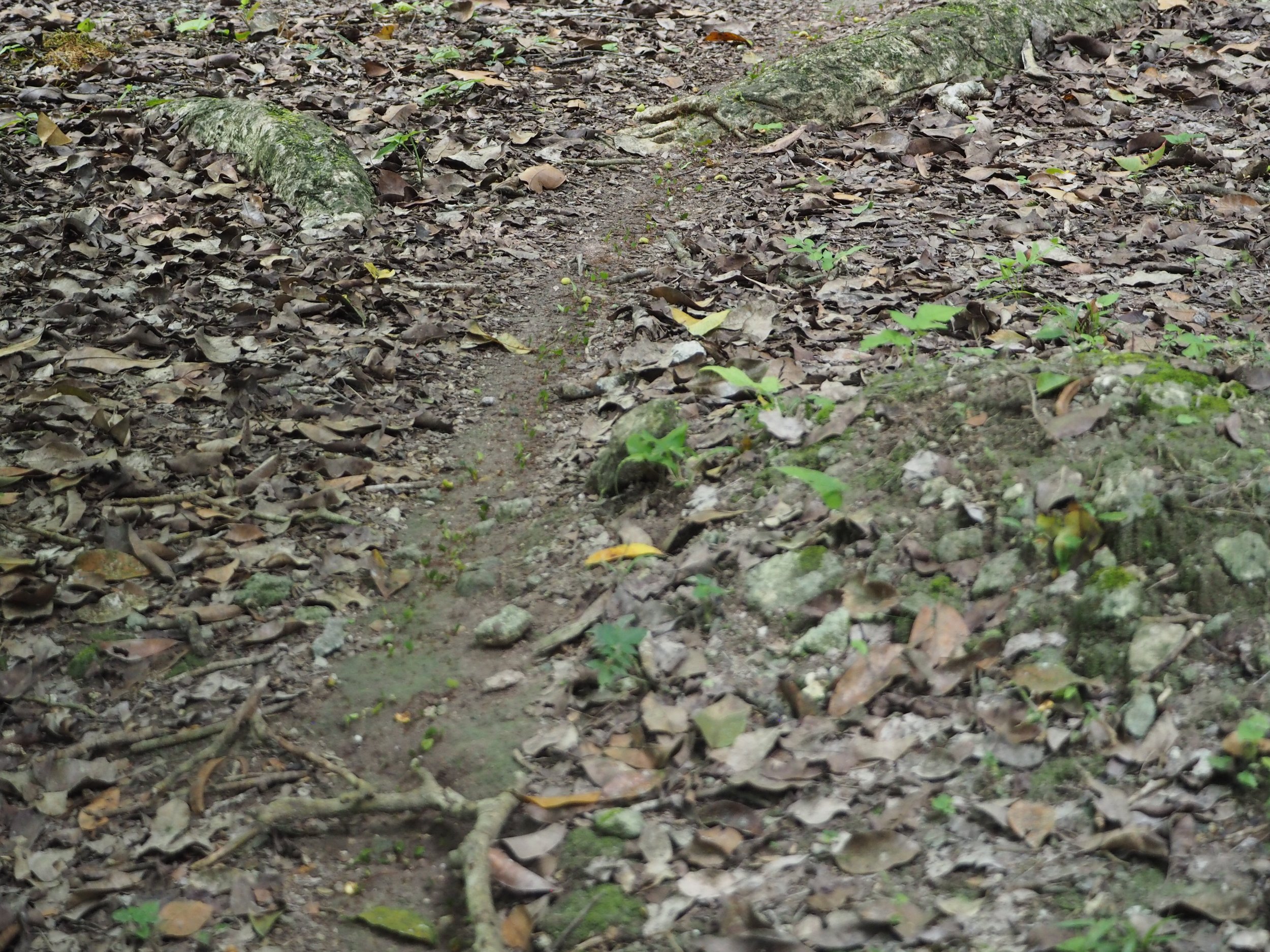Guatemala 2022/2023
This December 2002 - January 2023, my husband and I went to Guatemala for my birthday. I haven’t spent nearly enough time down in Central or South America, which is sad. There’s great archaeology (Guatemala in particular has some of the best Mayan sites in the world) and there are great animals! I’m going to organize this a little differently from other trips. I’ll start with the archaeological sites we went to, then the towns we visited, and then just lots and lots of animal stuff. We had some amazing sightings - we saw an Agouti! So I think I’m going to do a bit on birds and then a bit on mammals.
Kaminaljuyu
This site is actually in Guatemala City. It’s not a very large site, but it does have some really interesting things to see. It isn’t very thoroughly excavated, but there are a few really nice areas that you can see. What really hits is the underground section that is part of the acropolis and that can give you an excellent idea of how impressive this site once was. It is also interesting in that it had a huge length of habitation - over 2500 years. What you can see is only a fraction of what is there, but it’s worth a visit if you have time to kill in Guatemala City.
I also recommend doing some reading on the site. I’m not going to quote the Wikipedia page here, but you might want to check it out. We tend to think of the big three Mesoamerican cultures (Incan, Mayan, Aztec,) but there were so many cultures that predate those and were so widespread and important. While the populations in this area could all eventually be under the “Mayan” umbrella, they were more like city-states. And Kaminaljuyu seems to have bee incredibly important at different periods of time for different cultures.








Iximche
About an hour and a half outside of Guatemala city is the city of Iximche. Well, it used to be the city of Iximche. It was really interesting visiting because this is one of the later cities of the Mayan. Of course, calling the Mayan the Mayan is missing how diverse the people were and how many city-states they were divided into. Iximche was the capitol of the Kaqchikel Maya in the mid-1400s to the 1500s, so they were one of the sites that actually encountered the Spanish.
The site is quite large and well-excavated and presented. At the far end of the site you get the area that was used by the military, then the area of the scribes, then the priests, and finally the nobility. The homes of the normal people were probably where the parking lot is now. There is a discussion to be had about how the classical approach to archaeology that emphasized the large, grand, and most importantly stone buildings has done a great disservice to understanding the lives of the every day people of the sites. I’ll probably put an article up about that in my musings page since there is a long discussion to be had about the evolution of archaeology over time and how many cultures, especially those in the Americas, have been really done a disservice by archaeologists who expected the sites here to match what they saw in Europe and the Middle East and how that led to years of erasure and misunderstanding of cultures.
Anyways, there are some very neat parts of the site. They have a well-preserved ball court. And they have a main temple where the blood of the sacrificed would have flowed down and into a blood fountain. So that’s neat. There is another whole discussion to be had about Mesoamerican human sacrifice and how it was presented by Europeans as abominable but then again, they massacred huge swaths of natives in the name of their God, so what is really the difference if you do it on top of a temple or just on the ground in a city, except of course for the nifty blood fountain.
It is a really nice site and well worth a visit. It is particularly interesting because it is so late in the Mayan cultural period, but also at a time when the Kaqchikel were having a bit of a difficult time with wars against their neighbors and such. So while it is a very impressive site, it doesn’t have the huge temples of Tikal or the amazing Stele of Quirigua. But the site is well worth a visit if you’re in the area.
We actually visited through a viator.com tour hosted by Carmen. She was amazing and really knowledgeable. It is very interesting to see how strong the indigenous culture still is and having a guide who was a local was a great way to better understand how Guatemalans relate to their past and the complicated history of colonization. So, if you’re interested in the tour (which was also nice because we didn’t have to worry about the rental car), it’s found on viator.com and is the full day Iximche-Antigua Guatemala tour.




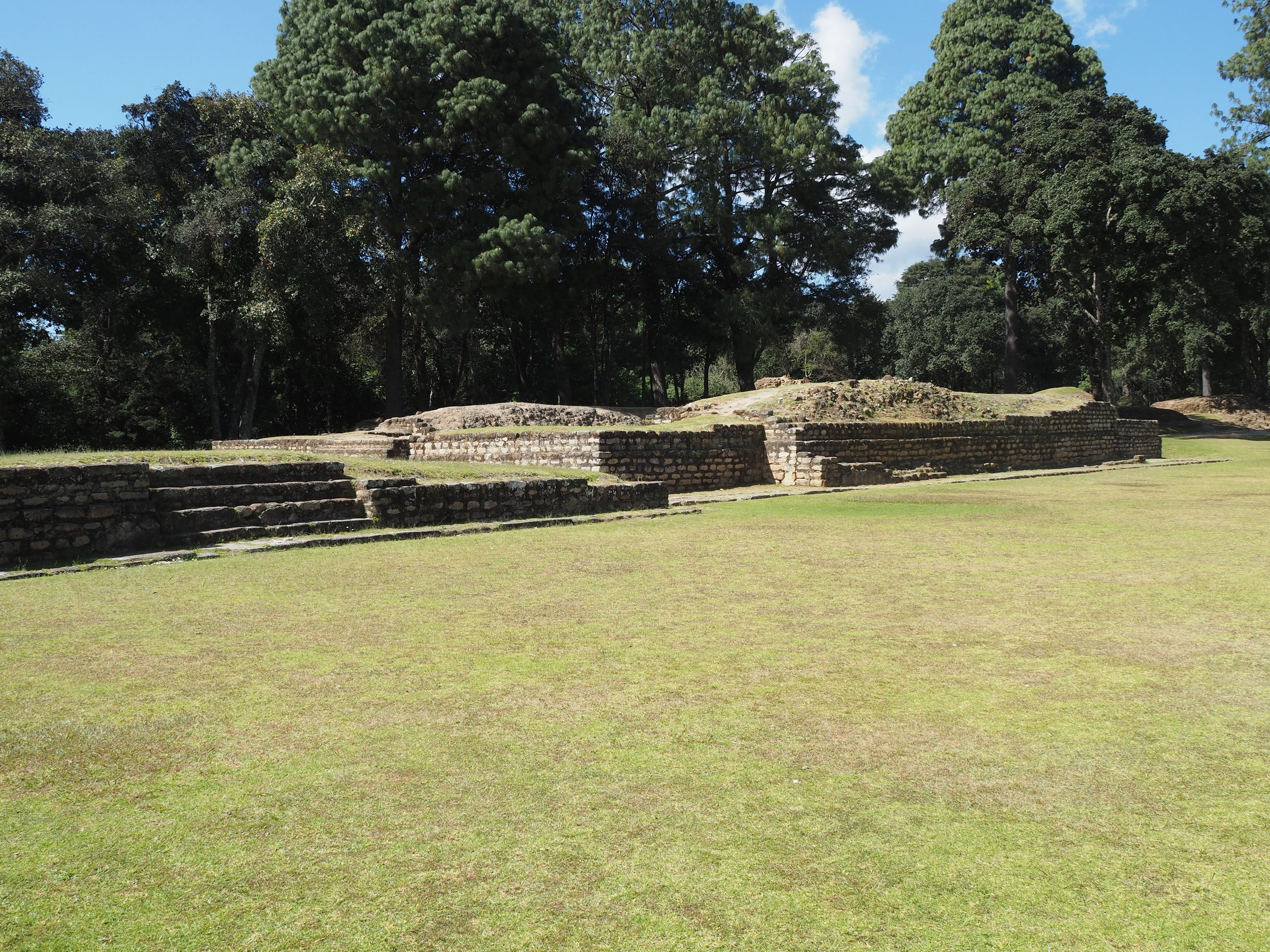





Quirigua
Quirigua is one of the two sites in Guatemala that are Unesco world heritage sites. It dates back to the Classical period, when it was a Mayan city-state. It was originally founded in the 200s CE, but then really got going in the 500s. It was the 700s and one particular king who won a war against nearby Copan that lead to the height of the city. His son didn’t do quite as well in the whole leadership department, and the site was basically in full decline by the late 800s CE. There was some resettlement of the site later on by unconnected peoples, but by the late 900s, the site was basically abandoned. It’s amazing to think that this city was founded, had a longish life as basically a vassal-state of Copan, then had one ruler who just changed everything. The city was at the height of its splendor and power, then his son just couldn’t live up to his feats and everything was just kind of downhill from there.
While Quirigua is quite a lovely site to visit in general, what really put it over the top in terms of modern interest are the stele. These include the largest Mayan stele yet discovered. Most of these date to the period of Sky Xul, the king who managed to conquer Copan. He was very proud of this fact and so erected numerous stele to record it. His son, Jade Sky, erected two small stele at the beginning of his reign, but I think even he knew it wouldn’t help. The stele really are amazing. They are huge - the largest is about 35ft tall. I’m about 5’6”, so yeah, the thing is 7 times taller than I am. It really is just monstrous. And there is decoration on all four sides. The “front” of the stele usually have just an image, usually some sort of depiction of an event (like the killing of the king of Copan.) On the two short sides are hieroglyphs basically explaining the stele and the reason it was erected, by whom, and when. Then on the “back” side is another image, usually on the top half, and then more explanatory text below it. These stele are really impressive, and probably the most famous thing about the site.
There are also some really interesting zoomorphic items. These are large round forms, with animal features on the front and top, and the hieroglyphs on the back. They are quite impressive and really interesting in the way they combine features of multiple animals.
The buildings of the site are quite impressive. Not as tall as Tikal (is anything as tall as the temples of Tikal?) but still quite impressive. A lot haven’t been fully excavated, but enough has been uncovered that you can get a sense of the size and scope of the buildings. There are a few that are behind fencing in order to protect some more fragile bits of decorative stonework. The decorative stonework is really quite lovely.
Quirigua is about 40 minutes driving from Rio Dulce. It’s easy to get to, well marked, and with useful information on easy-to-read signs throughout the site. It is absolutely well-worth a visit. It’s also not nearly as busy as Tikal. So, if you are interested in Guatemala and archaeology, I really recommend a visit to the site. The fact that those stele are there on site and not in a museum is really the selling point. They are just so impressive.

























Tikal
If you know anyone who’s gone to Guatemala, you more than likely know someone who went to Tikal. Tikal is arguably the biggest tourist draw in the country. And it is worth it. The temples are some of the largest ever built, and the site itself is sprawling. It’s amazing to think how much is still underground there.
If you go, be sure you have cash. Credit cards (and internet and cell service) are basically a no-go. Tikal itself is located without a huge national park, so entrance is restricted. To buy tickets at the entrance, they will want to see your passport, so that’s another thing to remember. Once you buy your ticket, you enter the park and drive up a long road that leads to the parking lot and archaeological site entrance. We stayed at the Jungle Lodge, which is quite nice. But just a warning - they turn the power off on regular occasions, and air conditioning isn’t a thing. We were there in January and it was hot and super humid.
If you want to do a sunrise or sunset trip, you must have a guide, and there’s an extra ticket you have to buy for that. We did a guided tour that was broken into two parts. The first was the morning (we didn’t do the sunrise, and our guide actually said that was a good call because mornings tend to be very cloudy so you don’t get much of a view.) Then we had lunch at our hotel and went back for more tour and the sunset. Our guide also walked back with us in the dark and we had chance to see some interesting tarantulas, so that was pretty cool.
So, what is there to say about Tikal? It dates to around the same period as Qurigua, and they were considered rival city-states. The main enemy of Tikal was Calakmul, and Quirigua was usually on the side of Calakmul while Tikal was allied with Copan. But Tikal is as amazing as it is because it was very powerful. Though there was a period when Calakmul basically conquered the city and sent the king into exile, he returned, took power back, and ended up really turning Tikal into the amazing site it became. He was the one who built three of the main temples, while his son finished his work and erected more.
But we should start at the beginning. Tikal’s origins go back to 1000 BCE, and there is evidence of various civilizations there on and off. It wasn’t a major power player at the time, but around 100 CE, things changed. Tikal started growing in power with the establishment of one of the longest ruling dynasties in the Mayan world. Tikal became a major cultural and innovative center that saw its influence spread to other Mayan cities.
Something pretty interesting about Tikal is the connection between Tikal and Teotihuacan, which isn’t exactly next door. There was a Teotihuacan embassy in Tikal by the 200s CE and there seems to have been pretty close ties between the two city-states. If you aren’t aware, Teotihuacan was not Mayan, but instead eventually became Aztec (though the site itself and some of its most famous buildings predate the Aztecs, so they may have been their own unique culture.) Apparently at one point, Teotihuacan may have actually conquered Tikal.
The height of Tikal dates much later, though, to the 700s CE. This was when many of the largest temples were built, including Temple IV which is currently the large pre-Colombian building still existing in the Americas. It may not have been the tallest built, but right now, it holds the title. This is the period of war with Calakmul and increasing tensions between the various city-states of the region. But when they weren’t at war, they played ball! There are three ball courts in the complex of the seven temples. These seven temples were actually housing for visiting dignitaries. Apparently, delegations from the main seven city-states would travel to Tikal to participate in a major tournament, with the winning state getting to take home lots of gold, jade, and people (warriors and servants.)
But like Quirigua, this was all not to last. By the late 800s CE, everything in the Mayan world was slowing. There was more war, there appeared to be droughts and other ecological issues, and the people were not happy. So, one of the reasons for human sacrifice in the Mayan world was to keep humans on good terms with the gods. The kings and priests of the Mayan world had good lives with lots of riches and food, and they “earned” that by keeping the gods happy. What do you get when a king or priest who is supposed to keep the gods happy can’t seem to get the rains to come? You get a lot of people asking what, exactly, is the point of these people. Why do they get the good homes, best food, fanciest jade if they can’t even do the one thing they are getting paid for? And so the peasants seem to have had a serious talking with these people which ended up with the end of the dynasty and the fall of Tikal.
The city was only used by small populations for a few hundred more years, and then it was abandoned completely. The city was reclaimed by the jungle, and even now, there is way more of it that is under the mounds of earth. Absolutely worth the visit.




















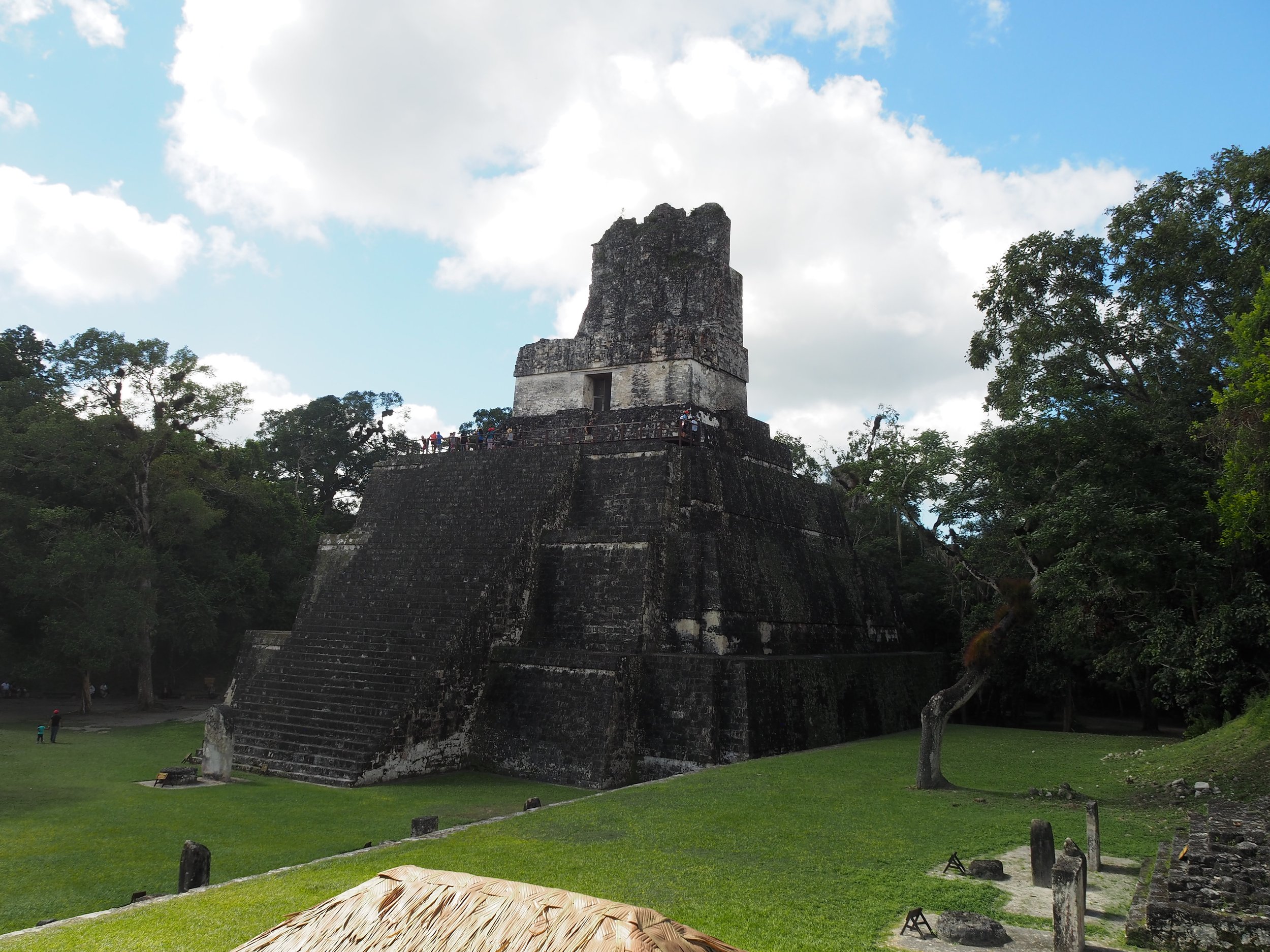


















Antigua Guatemala
Antigua Guatemala was one of the early capitols of the country. It was founded in the 1500s by the Spanish colonial government and is very typical of its time and influences. The city feels very Spanish. It’s lovely, with some very neat old buildings built in the courtyard-style, public parks surrounded by shopping colonnades, and some very cool old churches. Unfortunately, many of the buildings have been damaged over the years since the city is located worrying close to a number of active and dormant volcanoes, and earthquakes are not uncommon.
The city itself isn’t very large and is very walkable. It’s a great example of Spanish colonial architecture. There are some nice restaurants, and apparently the shopping is very popular. I did get a very nice earring and necklace set at the Casa de Jade, which is silver with blue and lavender jade (colors only found in Guatemala.) If I were going back to Guatemala, I think I’d try to stay here. They have quite a few cute hotels in those old buildings, and it seems like a nice place to just wander and take in the atmosphere. As long as there isn’t an earthquake.










Livingston and Rio Dulce
On the eastern cost of Guatemala lies Livingston. You can only get there by boat, and I don’t think they even allow full-size cars. It has a large population of Garifuna people, an unique group descended from indigenous Guatemalan and formerly enslaved African people. It’s a tiny town with lots of sea birds and a very walkable city center. We were there for New Year’s Eve and it was a blast. We stayed at the Hotel Villa Caribe and it was lovely. Just a nice place.
Up the Rio Dulce is the town of Rio Dulce. It’s tiny and has some nice restaurants. There’s also the Castel, which was the teeny, tiny fort built at the entrance to Lago de Izabal. Apparently this lake has manatees, but we did not get to see them. The fort wasn’t to protect the manatees, but instead to protect the trade the went up and downriver from pirates. It was a tiny fort. But it’s worth a visit.
Everything in these two towns is built around the water. Lots of fish to have, and the area around Rio Dulce is hugely popular for these waterfront hotels that are only accessible by boat. We stayed at Hotel Kangaroo and it was great. Good food, great birdwatching, and very quiet. If you are looking for somewhere in the jungle, I recommend it. Though we had to be super careful about bug repellant and took antimalarials since this is a malarial region.













The Birds
So many birds!






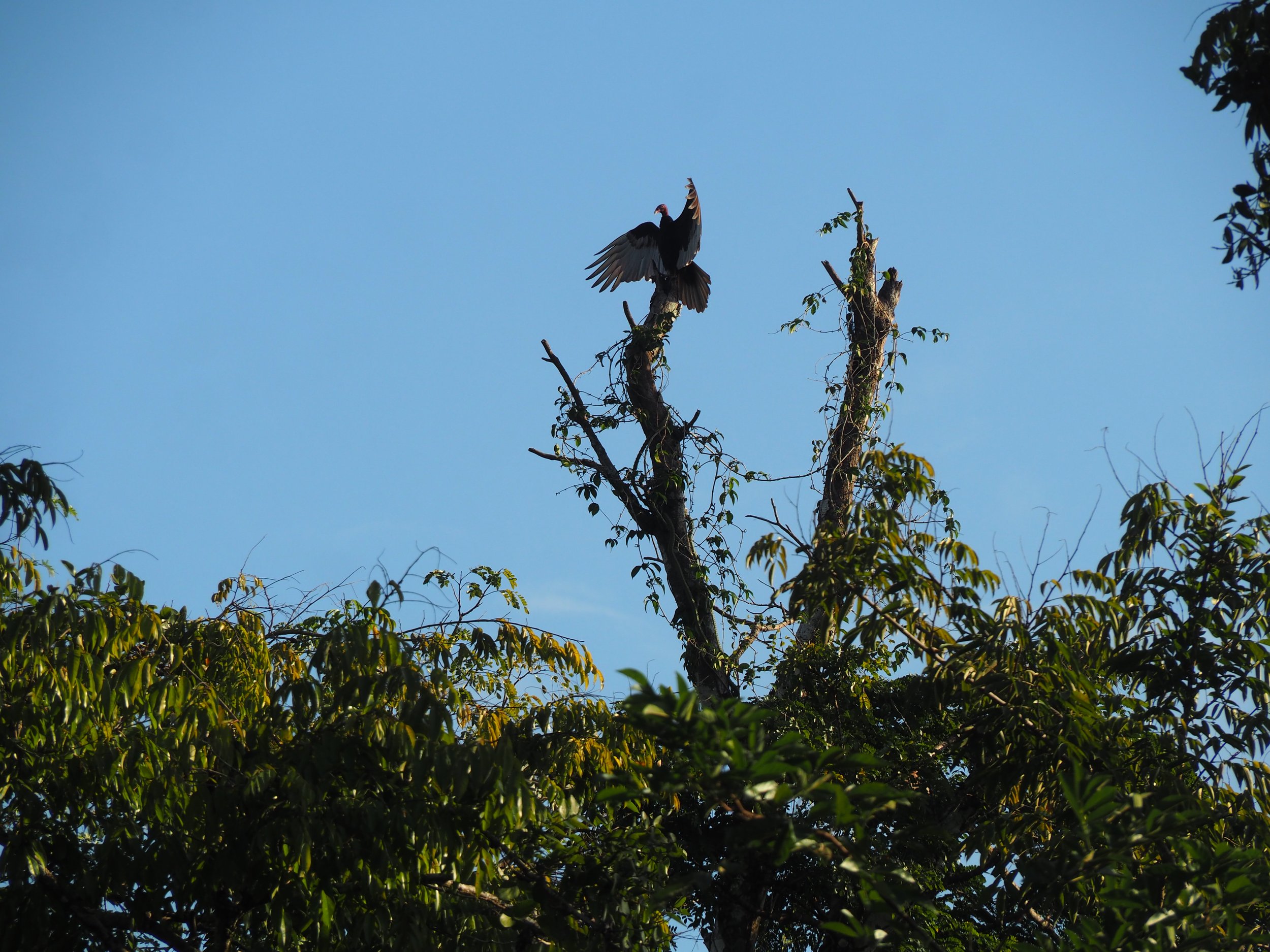
























Bird Videos!
The Mammals
The mammals we saw were mostly up in Tikal. While we didn’t get to see a jaguar in the wild, we did see an agouti (which I love), both Howler and Spider Monkeys, Coatimundi (known locally as Pizote), and we got to pet peccaries. We also saw foxes, but unfortunately too quickly to get a photo of. So we really enjoyed the mammals we encountered in Guatemala.


















The Others
Most lizards, turtles, tarantulas, and spiders. Apparently my husband is an excellent tarantula-spotter.











